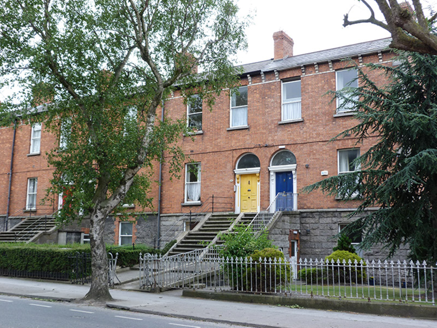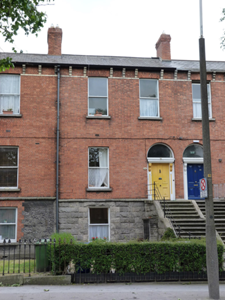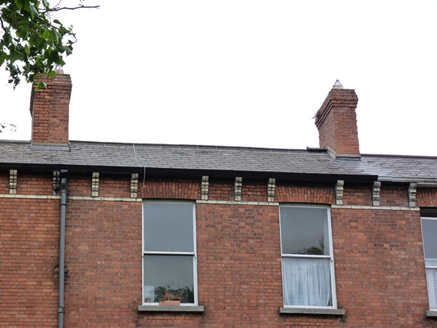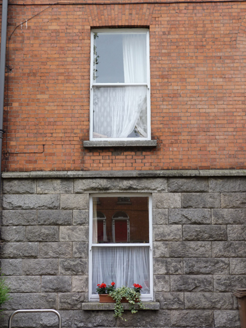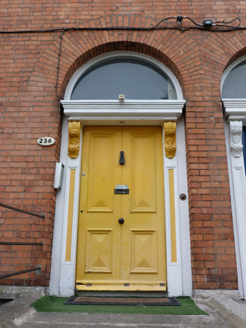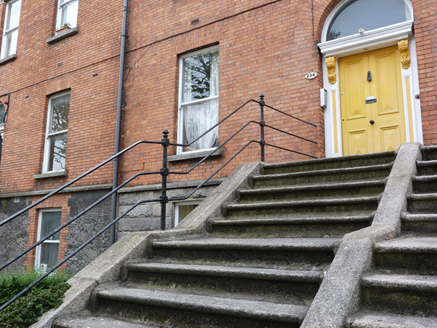Survey Data
Reg No
50130298
Rating
Regional
Categories of Special Interest
Architectural, Artistic
Previous Name
Rathdown Terrace
Original Use
House
In Use As
Apartment/flat (converted)
Date
1880 - 1900
Coordinates
314441, 235614
Date Recorded
15/06/2018
Date Updated
--/--/--
Description
Terraced two-bay two-storey two-pile former house over raised basement, built c. 1890 as one of terrace of fourteen, having full-height return to rear (south) elevation. Now in use as apartments. M-profile pitched slate roof, hipped to west end of rear pile, with red brick chimneystacks having clay pots to east and west ends and to return, profiled metal gutter supported on corbelled yellow brick eaves course, and with replacement uPVC downpipe to east end. Red brick walling to upper floors, laid in Flemish bond, with yellow brick stringcourse over granite plinth course and rock-faced granite walls to basement to front (north) elevation; yellow brick, laid in English garden wall bond, to rear. Square-headed window openings with granite sills, having one-over-one pane timber sliding sash windows to front elevation and replacement uPVC to rear elevation. Round-headed principal doorway with carved timber doorcase comprising panelled pilasters having scrolled brackets, supporting timber frieze and plain fanlight, and having carved timber panelled door. Flight of twelve nosed granite steps and granite platform shared with house to west, with wrought-iron handrail on granite plinth to east with cast-iron uprights. Garden to front, bounded by decorative cast-iron railings on cut granite plinth, having decorative cast-iron pedestrian gate with ornate piers.
Appraisal
This well-built house is part of a terrace of fourteen late nineteenth-century houses with similar parapet heights and fenestration patterns. The combination of rock-faced granite and red brick adds visual and textural interest to the facade. Retention of timber sash windows, as well as the carved timber door and doorcase, enhance the historic appearance of the building. The corbelled brick detailing to the eaves places the house in a late nineteenth-century context. The impressive steps and the intact setting details considerable enhance the site. The North Circular Road was laid out in the 1780s to create a convenient approach to the city, but developed slowly over the following century with little development west of Phibsborough until the 1870s.
